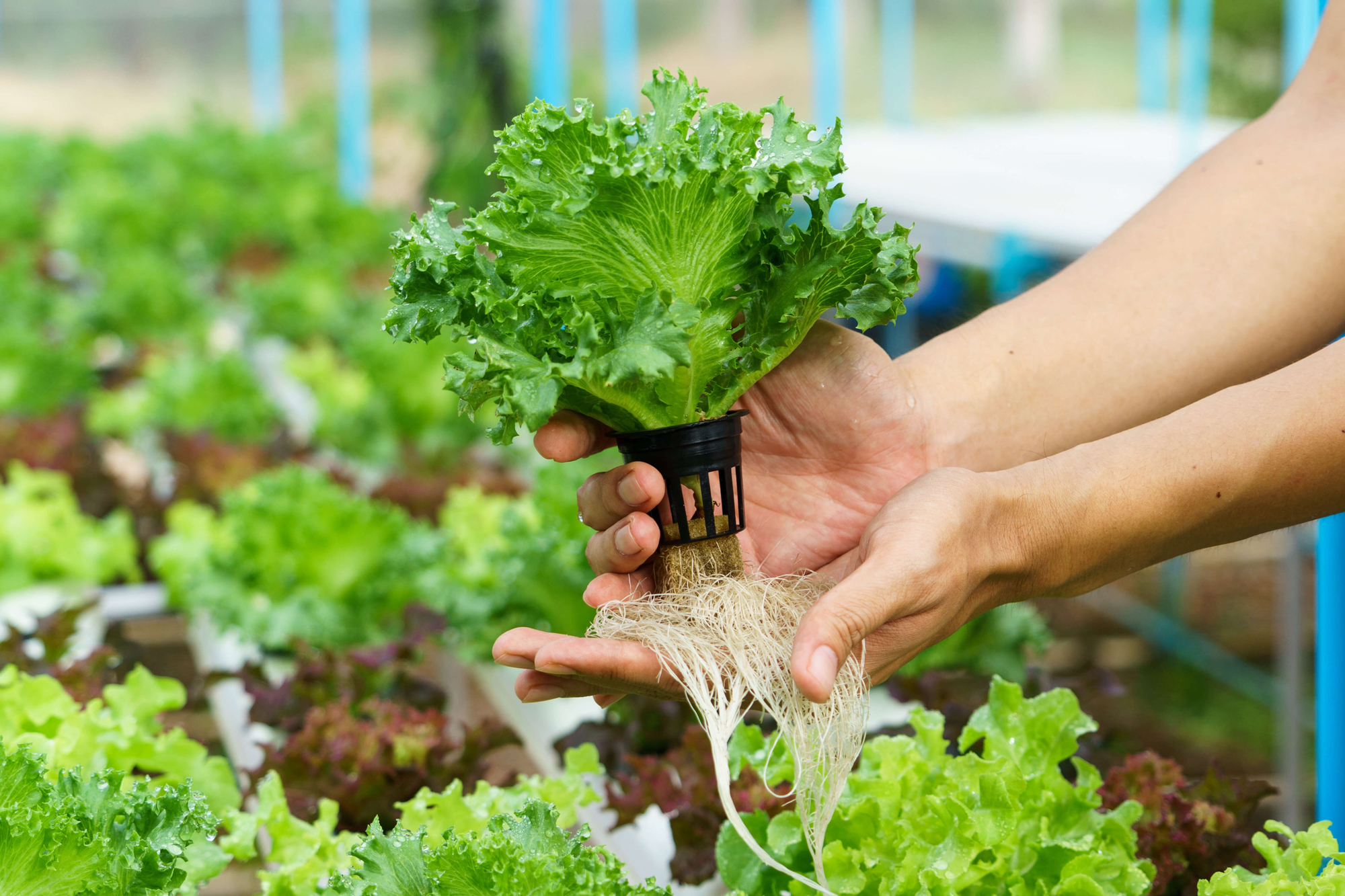Blogs
hydroponics

Hydroponics is a method of growing plants without using any soil, as they are grown with a nutrient solution that provides the mineral nutrients needed for growth, and the plants get all their nutrition through this nutrient solution that is provided to their roots.
Hydroponics ranges from growing a small selection of herbs in the kitchen to many plants in a large-scale commercial operation, and people with limited or no outdoor space such as city dwellers who can't have an outdoor garden can find hydroponics particularly useful.
There are many types of plants that grow well in hydroponics, including herbs, lettuce, leafy greens, tomatoes, peppers, and strawberries, but you should avoid using hydroponics for some types of plants that grow tall such as corn or plants that have deep roots such as potatoes.
How hydroponics works
Plants need three main elements to grow:
essential nutrients
water
Sun rays
In conventional agriculture, soil plays a role in providing support for the plant in its uprightness, protecting the roots and serving as a reservoir for water and nutrients.
Basic needs of hydroponics
The basic elements of hydroponics systems do not differ no matter how different the methods of these systems, and these elements are:
Fresh water
Hydroponics plants need filtered water with a balanced pH. Most plants tend to have a pH of around 6-6.5. The pH of the water can be adjusted using over-the-counter solutions found in hardware, garden, or hydroponic stores.
Oxygen
In conventional agriculture, the roots can obtain the oxygen needed for respiration from air holes in the soil, and in hydroponics, a space must be left between the base of the plant and the water tank, or an oxygen pump is used inside the container in which it is grown, similar to that placed in aquariums to produce oxygen.
root support
In traditional agriculture, soil supports and preserves the roots. Therefore, in hydroponics, an alternative to soil must be provided to support the roots of the plant. These alternatives include materials such as vermiculite, perlite, algae, coconut fibers and rock wool. Materials that may compress such as sand or that do not retain any should be avoided. Moisture like pebbles.
Nutrients
Plants in hydroponics need a lot of minerals such as magnesium, phosphorous, calcium and other nutrients to stay healthy and productive, just like plants that grow in the ground that need healthy soil and fertilizer. It nourishes plants, and the nutrient solution can be easily made by purchasing mixtures from specialty stores.
the light
When growing plants indoors, special lighting must be provided to replace sunlight, and each type of plant has different requirements for the amount of light it needs and to install the lights, integrated daily light is used.
There are also other elements to consider during the further development of aquaculture eg carbon dioxide supplementation.
By monitoring and adjusting these key variables, you can begin to discover exactly what plants need to thrive and replicate these conditions for every future growth.
Hydroponics benefits
Hydroponics (i.e. dispensing soil) is a revolutionary discovery that allows farmers to produce food anywhere in the world at any time of the year and higher net yields with fewer resources. While the growing seasons and areas are witnessing a great change in the climate, and at the present time, with the change in temperatures and the change in growing conditions with them, and even in normal conditions, there are many places where the land is not suitable for agriculture, such as deserts, so most vegetables are shipped to them from distant areas and inspected. Its nutritional value and quality are all the way down.
But when hydroponics are used, local food systems can be created, and special container farms have been created in communities and areas where it is not possible to grow soils.
It is also possible to put a hydroponic farm behind restaurants that want fresh produce, and when you grow hydroponics they don't have to pause depending on the season, or risk losing crops due to bad weather.
Because hydroponics roots are infused with all the nutrients they need and grow faster than plants grown in soil, hydroponic plants spend more time growing and more time and energy for their roots to search for food in the soil. Growth rates vary based on system type and quality of care but In general, aquatic plants can mature up to 25% faster than those grown in soil.
Also, hydroponic systems require less water than conventional soil-based systems, as they can save up to 98% less water than conventional soil-based systems, because hydroponics is inside closed containers and is not subject to the same rates of evaporation, In addition, the water used in hydroponic systems can be filtered, added new nutrients, and returned to the plants so that the water is constantly recycled rather than wasted.
Indoor aquatic plants also do not need any other resources such as pesticides and other potentially harmful chemicals, as hydroponic crops are protected from many plant pests and diseases found outdoors on soil-based farms.
Disadvantages of hydroponics
easy to see